Driving safely around schools is everyone’s responsibility – these are the road rules to know when Victorian schools resume in 2025.
Australia’s safest baby and child car seats for 2025
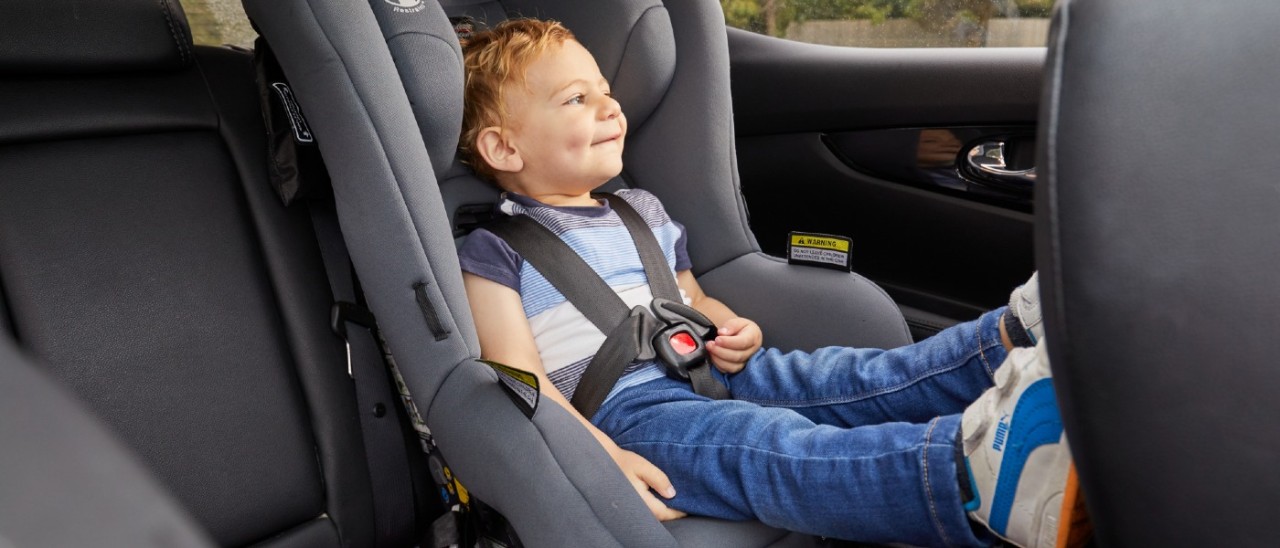
Whether you’re considering a capsule, convertible or booster, these are some of the Australia’s safest and easiest-to-use baby, toddler and child car seats for 2025.
Making sure children are safe and secure in a correctly fitted car seat is one of the best ways to protect them. The laws in all Australian states and territories, including Victoria, outline the minimum child car restraint requirements for all children up to the age of 16 years.
To help parents, guardians and drivers make the safest choice, the independent Child Restraint Evaluation Program (CREP) regularly assesses child car seats. The organisation has assessed more than 200 child and baby car seats since 2012, with more than half of those models tested since 2021.
CREP is a national consortium including VicRoads, Kidsafe and the Transport Accident Commission. RACV Head of Policy James Williams says it’s important for parents to regularly check their car seats are still safe and suitable for protecting their children.
“To help protect your child, it’s really important to have a car seat installed and used correctly on every single trip you take,” Williams says.
“Parents and carers will be aware of how fast their child can grow and therefore they should be checking monthly whether the restraint is still the right size.”
On this page
What do the CREP assessments do?
Single-purpose seats
- Safest baby capsules
- Safest forward-facing child car seats (non-convertible)
- How long can a child stay in a rearward-facing child car seat?
Convertible child car seats
Booster seats
Multi-purpose seats
Frequently asked questions
What do the CREP assessments do?
The CREP assessments aim to educate parents about which restraints offer the best protection, by assessing child car seats not only on how they perform in crash tests, but also how easy they are to install and use. The seat with the highest protection rating may not have the highest ease-of-use rating.
Your child's safety is of paramount importance, which is why all seats tested by CREP comply with Australian Standards. While Australian Standards specify a range of design and performance requirements and involve some crash testing, the CREP ratings assess how a seat performs over and above the minimum safety requirements of the standard. This means even a one-star CREP safety rated seat performs over and above the minimum requirements.
For the assessments, test dummies measuring the upper end of the height and weight limit for each type of seat are put into a crash simulation to measure the forces experienced by the dummy on impact. The car seats are scored based on several performance aspects, such as how well they maintain structural integrity and how well they protect the child’s torso in a car crash.
Related reading: How to drive safely with babies and children.
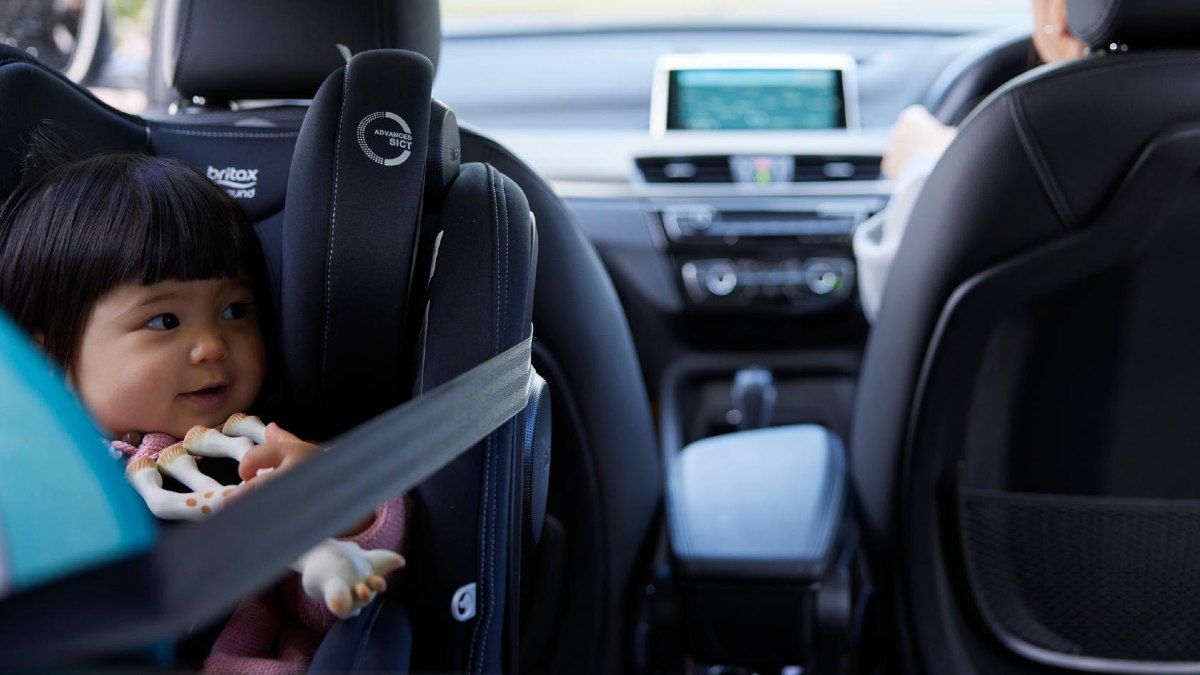
Children should remain in a rearward-facing seat (either a capsule or rear to froward-facing convertible) until at least six months.
What are the best baby and child car seats in 2025?
The best car seat for your child is one that fits. Although guidelines are based on age, children should always travel in a restraint matched to their size and height. CREP advises that if your child is too small for the child restraint specified for their age, they should be kept in their current child restraint until it is safe for them to move to the next level.
CREP has tested many of Australia’s top-selling car seats. From baby and toddler seats to boosters and convertibles, these are the highest-rating child car seats by category.
Click here to view the full results of the latest CREP assessments.
Single-purpose seats
Single-purpose car seats are designed to be used in only one mode: rearward or forward-facing, or as a capsule or booster. That means once a child outgrows their seat, they will need a new one.
The safest baby capsules (rearward-facing)
Capsules are baby car seats that click into a base installed in the car. Many capsules can also be clipped into selected prams – this is sometimes referred to as a travel system.
Of the seats tested since 2021, the Cybex Cloud Q had the highest protection rating of all capsules with a score of 3.9. The capsule has an ease-of-use score of 2.6 and it can be used from birth to 12 months.
When it comes to ease-of-use, the Britax Safe-N-Sound B.Pod Lite BS2300B-C20135 capsule had the highest score at 3.9, with a protection score of 3.2. This capsule is also approved from birth to 12 months.
| Capsules | |||
|---|---|---|---|
|
Cybex Cloud Q |
Rearward only (capsule, 0-12 months) |
3.9 |
2.6 |
|
Britax Safe-N-Sound B.Pod Lite BS2300B-C20135 |
Rearward only (capsule, 0-12 months) |
3.2 |
3.9 |
How long can a child stay in a rearward-facing child car seat?
Children from birth to six months must travel in a rearward-facing child restraint. Then from six months to 4 years they must travel in either a rearward-facing or forward-facing child restraint, according to VicRoads.
This means you can legally use a rearward-facing child car seat up until the age of 4 years, as long as the child's shoulders are below the maximum shoulder height marker (if present) or below the top shoulder harness strap slot (if there is no marker). Many parents find that a convertible child car seat rather than non-convertible child car seat is a cost-effective solution.
Looking for a new family car? Research and compare models online.
The safest forward-facing child car seats (non-convertible)
If you have a non-convertible baby capsule, your child will need to move to an appropriate child car seat once they outgrow it. In the category of non-convertible forward-facing child car seats, CREP tested 11 models.
Age of use: Accommodate most children six months up to eight years. Kidsafe advises that you should keep children in a forward-facing restraint with an inbuilt harness until they reach the maximum size limit, which is indicated by the upper shoulder height marker. Download the Kidsafe guidelines for more details.
In the category of single-mode, forward-facing child car seats, CREP rated the Britax Safe-N-Sound Maxi Guard BS8300B-020133 the highest, with a score of 3.9 for protection and 3.3 for ease-of-use.
The Britax Safe-N-Sound B Grow+ Clicktight+ BS8700A-C20133 received the highest ease-of-use score at 4.4 stars (and a protection score of 3.3).
| Forward facing (single mode) | |||
|---|---|---|---|
|
Britax Safe-N-Sound Maxi Guard BS8300B-020133 |
Forward-facing (6 months - 8 years) |
3.9 |
3.3 |
|
Britax Safe-N-Sound B Grow+ Clicktight+ BS8700A-C20133 |
Forward-facing (6 months - 8 years) |
3.3 |
4.4 |
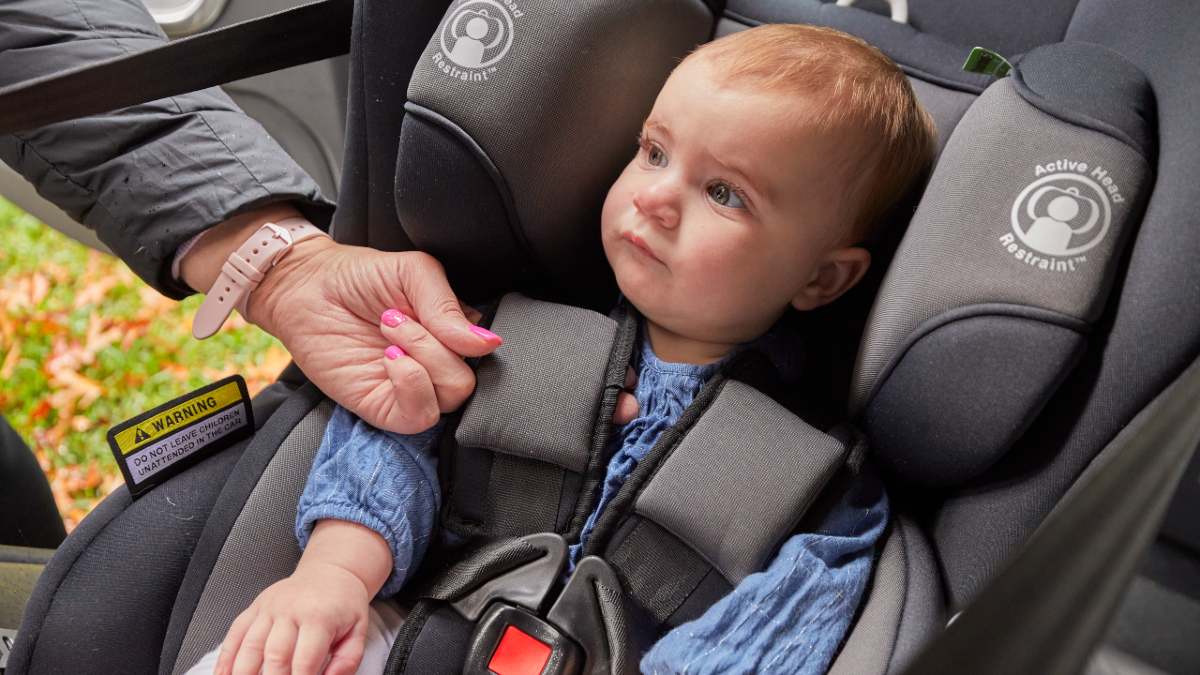
Whether you opt for a capsule or convertible baby car seat is up to you and what best suits your circumstances. Photo: Matt Harvey
Convertible seats
Convertible seats can be used for longer because once kids outgrow one mode, the seat can be reconfigured. Many convertible car seats can be used from birth until four years of age, but sometimes even longer.
Most of the seats tend to have higher protection ratings in either rearward-facing or forward-facing mode so it is important to check the safety rating across all modes.
The safest rearward-facing car seat convertible to forward-facing
CREP tests three types of rearward to forward convertible seats on the Australian market:
- Rearward-facing from birth to 12 months, forward-facing from six months to four years
- Rearward-facing from birth to 2.5 years, forward-facing from six months to four years
- Rearward-facing from birth to 2.5 years, forward-facing from six months to at least eight years.
Three convertible rearward to forward-facing child car seats rated since 2021 earned the highest given 4.3-star rating in rearward-facing mode: the Britax Safe-N-Sound Premier II BS0072E-020133, the Britax Safe-N-Sound SafeFix tested with seatbelt BS0072E-i20133, and the Britax Safe-N-Sound Safekeeper II BS0072E-020133. The seats each scored 3.8 in forward-facing mode.
Also worth highlighting are the Britax Safe-N-Sound Cavalier BS0072K-020133, Britax Safe-N-Sound Guardian II BS0072K-020133, Nuna Rava AU CS12200, Britax Safe-N-Sound Compaq BS7300F-020133, Britax Safe-N-Sound Novo BS7300F-020133, Britax Safe-N-Sound Safeguard II BS7300F-020133 and Britax Safe-N-Sound SafeFix tested with ISOFix BS0072E-i20133, all of which scored higher than 3.8 in their forward-facing mode.
The Britax Safe-N-Sound B-First ClickTight BS3700A-C20133 scored the highest ease-of-use score for its category with 4.8 in rear-facing and 4.5 in forward-facing.
| Convertible, rear-facing to forward-facing | |||
|---|---|---|---|
|
Britax Safe-N-Sound Premier II BS0072E-020133 |
Rearward facing Forward facing |
4.3 3.8 |
2.4 2.0 |
|
Britax Safe-N-Sound SafeFix tested with seatbelt BS0072E-i20133 |
Rearward facing Forward facing |
4.3 3.8 |
2.4 2.0 |
|
Britax Safe-N-Sound Safekeeper II BS0072E-020133 |
Rearward facing Forward facing |
4.3 3.8 |
2.4 2.0 |
|
Britax Safe-N-Sound B-First ClickTight BS3700A-C20133 |
Rearward facing Forward facing |
4.1 3.7 |
4.8 4.5 |
The safest forward-facing car seat convertible to booster seat
Age of use: Accommodate most children six months to four years as a forward-facing seat and from four to eight years as a booster. Kidsafe advises that shoulder height markers, if present on a restraint, are the best guide to when a child fits into that restraint.
The top rated forward-facing to booster convertible child car seat was the Britax Safe-N-Sound Explorer II BS0090F-020133 which was rated 3.8 (forward-facing mode) and 3.5 (booster seat mode) for protection.
While this seat had the highest combined safety rating, several seats (including the Mother's Choice Levi GMBE2 2013, Mother's Choice Prime AP GMBE2A 2013 and Maxi-Cosi Titan Pro DJC-13-A) had higher safety ratings when in booster mode.
When it came to ease-of-use, the Britax Safe-N-Sound Maxi Rider BS8100A-020133 was rated best, with 3.1 and 3.7 ratings in forward-facing and booster mode respectively.
| Convertible, forward-facing to booster | |||
|---|---|---|---|
|
Britax Safe-N-Sound Explorer II BS0090F-020133 |
Foward facing Booster |
3.8 3.5 |
2.4 2.9 |
|
Britax Safe-N-Sound Maxi Rider BS8100A-020133 |
Rearward facing Forward facing |
3.0 4.1 |
3.1 3.7 |
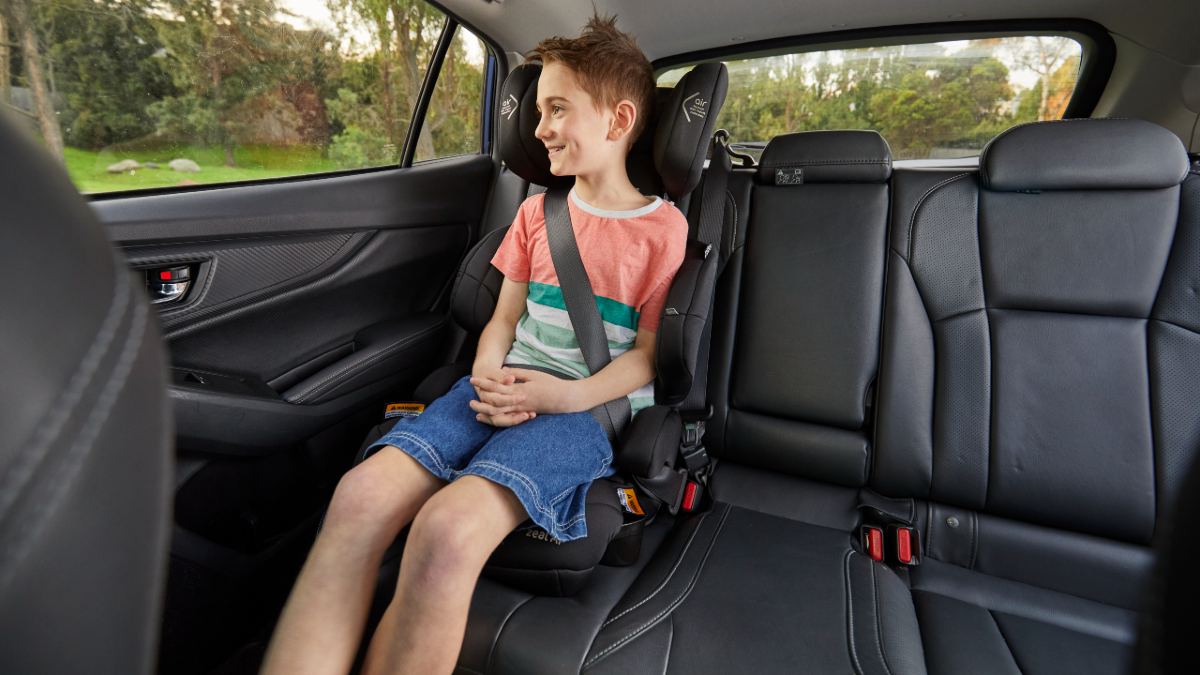
Children should remain in a booster seat until they pass the five-step seatbelt test, which ensures they are the correct size and height for an adult seatbelt. Photo: Matt Harvey.
The safest booster seats (single mode)
Parents are spoilt for choice in this category, with many seats consistently performing above the Australian Standard.
Age of use: Generally four years to at least seven years old. There are also booster seats that children can use until they are at least 10 years old. Kidsafe advises that children should keep using a booster for as long as possible, at least until they can pass the five-step test for good seatbelt fit.
The Britax Safe-N-Sound Tourer BS4000A-020133 had the highest protection score at 4.1 stars, and an ease-of-use score of 3.3. The booster seat with the highest ease-of-use score in this category was the Britax Safe-N-Sound Kid Guard BS4900B-020133 with a 4.4-star rating (and a protection rating of 3.8).
Note that while the Tourer is rated for kids aged four to eight years, the Kid Guard is suitable up to ten years of age.
| Booster seats (single mode) | |||
|---|---|---|---|
|
Britax Safe-N-Sound Tourer BS4000A-020133 |
Booster only |
4.1 |
3.3 |
|
Britax Safe-N-Sound Kid Guard BS4900B-020133 |
Booster only |
3.8 |
4.4 |
The safest multi-purpose child car seats
These seats can be used from birth until kids outgrow the restraint and are ready to travel with an adult seatbelt. However, seats can wear out over time, so make sure parts stay in good working condition.
Age of use: Accommodate most children from birth to at least seven years or 145 centimetres tall.
CREP only has data on three multipurpose child car seats that can be used from birth to eight years. Those seats are the Infa-Secure Advance Plus CS4313, Infa-Secure Gold Quantum Pro CS4313 and Infa-Secure Talent CS4313 each of which had the same scores across every mode in both protection and ease-of-use categories. For protection, the seats were rated 2.9 in rear-facing mode, 3.3 in forward-facing mode and 3.4 as a booster seat. They were rated 1.9 for ease-of-use in both rear and forward-facing modes, and 2.6 as a booster seat.
| Multi-purpose car seats | |||
|---|---|---|---|
|
Infa-Secure Advance Plus CS4313 |
Rearward-facing Forward-facing Booster |
2.9 3.3 3.4 |
1.9 1.9 2.6 |
|
Infa-Secure Gold Quantum Pro CS4313 |
Rearward-facing Forward-facing Booster |
2.9 3.3 3.4 |
1.9 1.9 2.6 |
|
Infa-Secure Talent CS4313 |
Rearward-facing Forward-facing Booster |
2.9 3.3 3.4 |
1.9 1.9 2.6 |
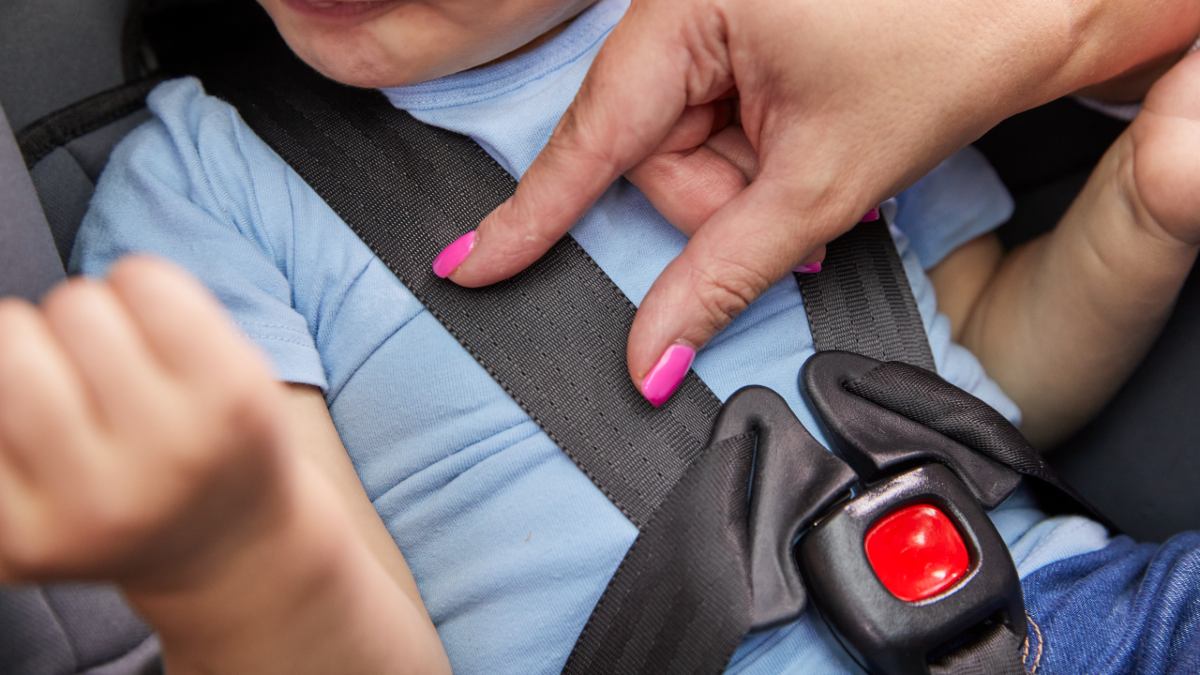
Testing potential car seats for ease-of-use is important as a seat that is easy for you to use is more likely to be used correctly. Photo: Matt Harvey
When buying a new car seat or assessing the suitability of an existing car seat, remember the following top tips.
1. Is the car seat installed correctly and fastened securely as per the manufacturer's guidelines?
"Child car seats can be complicated for many people – if you’re confused in any way, RACV strongly recommends talking to an experienced installer," RACV Head of Policy James Williams advises.
2. Do the child’s shoulders fit between the shoulder height markers on the restraint?
3. What's the safety rating in all modes? Convertible restraints might be safer in one position over another (for example, four stars in the forward position and three stars when facing rearward).
4. What's the ease-of-use score? A seat that is easier to use is more likely to be used correctly.
5. Newborns should be started in rearward-facing seats. Once they've outgrown them, they should be moved into a forward-facing seat, then moved into a booster. Children should remain in a booster seat until they pass the five-step seatbelt test, regardless of their age.
6. Check the price of the seat. Some of the seats that perform better in crash testing are also the cheapest. Aim to buy the safest seat you can afford.
If you’re buying a child car seat for the first time, you might have seen models that say they are ‘ISOFIX compatible’.
ISOFIX – which stands for International Standards Organisation FIX – is a universal anchoring system for child car seats. ISOFIX compatible baby and child car seats became legal in Australia in 2014 and modern cars sold in Australia are ISOFIX compatible (check your owner’s manual to determine if yours is).
You do not need to use an ISOFIX compatible baby or child car seat in Australia, though many parents find them easier to install. Importantly, ISOFIX compatible car seats must still use a tether strap to be legally and safely installed for use.
Baby and child car seats that do not have ISOFIX compatibility use your car’s existing seatbelts, as well as the tether strap, to anchor the seat instead.
Babies must travel in a rear-facing child car restraint from birth up until at least six months of age. This can be either a capsule or an appropriate rear-facing child car restraint.
Whether or not you decide on a capsule is a personal choice. Some parents prefer capsules for the ease of being able to take them in and out of cars, as well as clip them into certain prams.
However, babies grow out of capsules faster than convertible (rear to forward-facing) child car seats. Capsules only suit babies up to 12 months at most (some are only rated up to six months), and many babies grow out of them before that.
Capsules are generally for use from birth to at least six months; however, some are available for use from birth to 12 months. Kidsafe advises that children should use a rearward-facing child restraint until they outgrow it. A child has outgrown a car seat when their shoulders are above the maximum shoulder height marker (if present) or above the top shoulder harness strap slot (if there is no marker).
Yes, baby and child car seats that meet Australian standards can be installed by anyone. Refer to the manual when installing to ensure a correct fit. If you are uncertain about installation, professional child car seat installation services are available.
Where possible, it is often safest to buy a child car seat new from a reputable Australian retailer. This is because you can be certain of the seat’s model, year of manufacture, quality and safety rating.
If you are using a second-hand child car seat, ensure you are provided a manual for installation, that it has no wear and tear, that the buckles clip securely and that the seat is less than ten years old (seats should be used no more than ten years).
Also ask the person selling or giving it to you whether the seat has ever been in a crash. Baby and child car seats that have been involved in a crash should not be used or sold.
Reasons you might need to dispose of your current baby or child car seat include:
- Your child or children have outgrown the seat
- The seat is ten or more years old
- The seat has been involved in a crash.
If your seat is in good condition and isn’t close to its 10-year safe use expiry, consider donating it to a charity. Make sure you include the manual that explains how to fit it correctly. Some retailers also offer child seat recycling if your seat is not suitable for donation.
Most councils in Victoria also accept baby and child car seats as part of a hard rubbish collection. Cut the straps and remove harness and padding before putting it out for collection.


